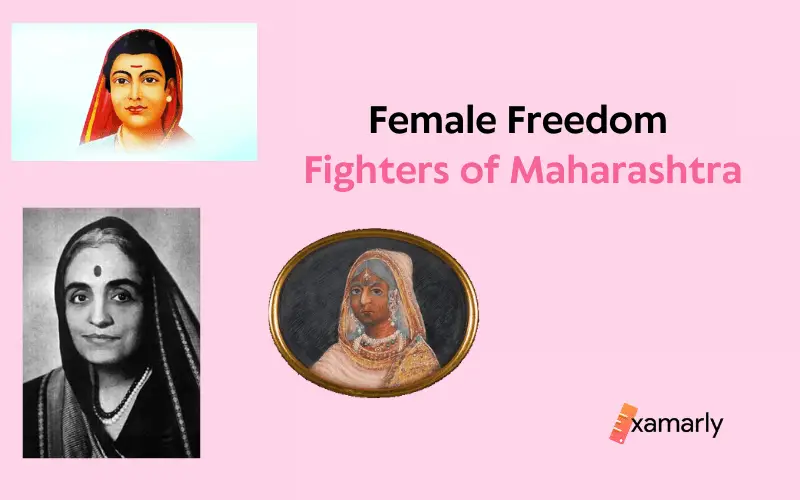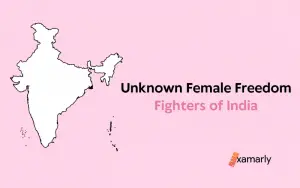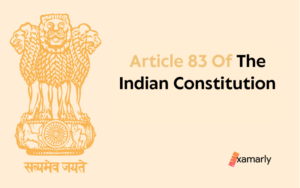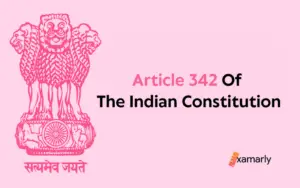Throughout history lessons in the school curriculum, we get acquainted with Indian freedom fighters who fought valiantly against British rule and helped in making India a free and democratic country.
It must have caught your eye that most freedom fighters are men. Were there no brave women who took up the cause of freedom? Was the contribution of women forgotten with time?
In this article, we will specifically turn our lens towards Maharashtra. Maharashtra had been a hotspot during the fight against colonial rule, and women came to the forefront and donned an active role in the movement.
Women who fought for freedom made selfless sacrifices and even laid down their lives for the freedom and prosperity of their country. These female freedom fighters of Maharashtra overcame numerous obstacles to accomplish their mission.
Many women from across the country responded to Mahatma Gandhi’s call and played a major role in the formulation of an Independent India.
The tales of bravery and sacrifice resonate in different sounds from different regions of the country.
Real patriotism was exemplified by Rani Laxmi Bai of Jhansi, whose bravery and exceptional leadership set the bar high.
One cannot ignore the crucial role played by women in the fight for India’s independence. So, the duty falls on us to read up on them and remember them through our thoughts and words.
- Female Freedom Fighters Of Maharashtra
- Conclusion
- FAQs
- Who Was India's Oldest Living Freedom Fighter?
- Savitribai Phule, Was She a Freedom Fighter?
- What role did Savitribai Phule play in the Indian independence movement?
- Who was Tarabai Modak and what was her contribution to the freedom movement in Maharashtra?
- What was the contribution of Anandibai Joshi to the Indian independence movement?
- How did Tara Rani Srivastava contribute to the Indian independence movement in Maharashtra?
Female Freedom Fighters Of Maharashtra
This article on female freedom fighters from Maharashtra will give you an insight into how courageously they fought for the Independence of our nation.
Read ahead to know about some of the Marathi female freedom fighters.
Baiza Bai
Other than being a political activist, Baiza Bai was a Scindia maharani as well as a banker. Following the death of Daulat Rao Scindia, she ascended to the regency of the Scindia kingdom and was governed from 1827 until 1833.
She was deposed as a strong opponent of the East India Company and was succeeded on the throne by her adoptive son Jankoji Rao Scindia II.
Born in Kolhapur, Maharashtra, in 1784, Baiza Bai married Daulat Rao Scindia in Poona at the age of 14. She was a great horsewoman and trained in sword and spear combat.
She accompanied her husband in the Maratha wars against the British and fought against Arthur Wellesley at the Battle of Assaye. She also came to her husband’s aid in administrative and financial matters.
After her husband’s demise, she inherited the throne. She had, like her father, a distaste for the Britishers. She was a strong ruler who had control over her land.
Most Maratha kingdoms were at loss after the Anglo-Maratha wars. But even then, Baiza Bai had some powerful moves u her sleeve which kept the Britishers at bay. She was later dethroned by her adopted son.
She was a large-scale banker in her own right in the 1810s. She was involved in money lending, bills of exchange, and speculating, which all resulted in her being quite wealthy.
Furthermore, she had complete authority over Ujjain, which was the centre of central Indian banking and business in the first half of the 1800s. Many architectural and religious gems are proof of the fact that she was a great supporter of art and religion.
Godavari Parulekar
Godavari Parulekar was a social activist, writer, and social and political activist. She was motivated by Marxist and Communist ideals and dedicated her life to fighting for farmers and the working class.
Godavari Parulekar was born in Pune on August 14, 1907. Laxmanrao Gokhale, her father, was a well-known lawyer. She had a good education.
After graduating from Fergusson College, she went on to study law. Godavari Parulekar was the first woman to graduate from law school in Maharashtra and became active in the student movement against British rule.
Inspired by the liberation movement, she became involved in political organizations. In 1932, the British served her with a jail term and branded her a freedom fighter.
Her politically moderate father did not support her decision to join the freedom struggle and she subsequently left home.
Godavari became a member of the Servants of India Society. She was the organization’s first female life member. She conducted a literacy drive in Maharashtra in 1937.
She organized domestic workers as members of the working class in 1938. The British imprisoned her several times for her efforts.
During this period, she met her future husband, Shamrao Parulekar. He was also a Servants of India member who was organizing protests in the same region. In 1939, Godavari married Shamrao Parulekar.
She then moved her attention to the farmer organization. She became a member of the All India Kisan Sabha and helped to establish its Maharashtra section, the Maharashtra Rajya Kisan Sabha. She was Sabha’s first joint secretary.
The Godavari was also an activist who documented the struggles of Adivasis and the condition of women in general. Her most famous book, “The Awakening of Man,” was published in 1970 and has since been translated into English.
Other works by Godavari Parulekar include an account of the Adivasi revolt and one on female prisoners. Godavari Parulekar was an inspiration to all who admired her work. Godavari Parulekar’s work is inspirational.
Rama Khandwala
Rama Satyendra Khandwala was India’s oldest tour guide and the last remaining member of Subhas Chandra Bose’s Rani of Jhansi Regiment during India’s liberation struggle.
The Rani of the Jhansi Regiment was the Indian National Army’s female wing. During the Indian Freedom Struggle, Rama Khandwala, the oldest tour guide in India, served as a sepoy.
She served in the military and was wounded during the Battle of Plassey in Burma. She fought in the freedom struggle of India and even worked as a nurse in a military hospital.
Khandwala was born on 3 December 1926 to a wealthy family in Rangoon, Burma. Her granddad was a lawyer and a doctor. Her mother, Lilavati Chhaganlal Mehta, was a member of the Indian Independence League and the recruitment officer of the Rani of the Jhansi Regiment.
Khandwala and her sister Neelam joined the Regiment as sepoys at the age of 17 after hearing Bose’s speech in Rangoon. Although not essentially from Bombay, she went on to live in the place.
In 2011, she completed 50 years of service as a Mumbai tour guide. She also received a National Tourism Award from President Ram Nath Kovind in Delhi.
The 67th National Film Awards have adjudged the film Elephants Do Remember the Best Biographical Film.
The film is the directorial debut of Swati Pandey and revolves around Maharashtra freedom fighter Rama Khandwala. It is a film based on her experiences at war. She breathed her last on 28 October 2021, at the age of 94.
Rohini Gavankar
Nonagenarian Rohini Gavankar is a remarkable woman, who kept the freedom movement alive in India for decades. But, what makes Gavankar different from the other Maharashtrian freedom fighters is her steadfast stance.
She remained active in the freedom struggle even at a young age, inspiring the women and girls students of Mumbai to take up arms.
At the age of 14, she used to mobilize kids and loudly sing patriotic songs. In the Prati Sarkar movement, she played the role of a messenger.
Gavankar remarked once that Pandit Jawaharlal Nehru considered the contributions made by Mumbai’s women to the liberation fight between 1930 and 1940 to be an inspiration for the entire country.
In fact, the indomitable spirit of fighting portrayed by women and girls kept the movement alive even as leaders got imprisoned.
Sumati Morarjee
The Indian National Steamship Owners Association was led by Sumati Morarjee (13 March 1909–27 June 1998), who was the first woman to hold that position.
In 1971, she received the Padma Vibhushan, India’s second-highest civilian award, in recognition of her civil service.
She participated in the underground movement for independence alongside Mahatma Gandhi between 1942 and 1946.
Conclusion
Though Mahatma Gandhi, Sardar Valla Bhai Patel, Bhagat Singh, and many such freedom fighters fought courageously and were involved in the struggle against the British government to liberate India, women were no less in showing their heroism in the struggle for freedom.
From small protests to the Non-cooperation Movements and Quit India movement, women left no stone unturned. Begum Hazrat Mahal, Rani Lakshmi Bai (or Rani Laxmibai), Aruna Asaf Ali, Uda Devi, Tara Rani Srivastava, Laxmi Sehgal, and many other courageous women from different cities and states of the country actively jump into the freedom fight.
Other freedom fighters from Maharashtra include Rani Channama of Kittur, who fought against the British East India Company in the late 19th century.
The role of women during the freedom movement was highly creditable and brought much applause from the Revolt leaders.
Many strong women spoke out in opposition to British authority. Many women flocked to the streets, marched in procession, gave speeches, and staged protests.
These women exhibited great bravery and fervent patriotism. Rarely are their altruistic efforts, sacrifices, and challenges discussed. Without addressing the important efforts made by female freedom fighters, any understanding of the Indian independence movement would be lacking. Their dedication makes the Indian flag fly higher in pride.
FAQs
Who Was India’s Oldest Living Freedom Fighter?
Satyavati Devi was India’s oldest living freedom fighter.
Savitribai Phule, Was She a Freedom Fighter?
Savitribai Phule, who is referred to as “one of the first-generation contemporary Indian feminists,” was a pivotal figure in the struggle for women’s rights in India under British rule. Savitribai Jyotirao Phule was a poet and a social reformer.
What role did Savitribai Phule play in the Indian independence movement?
Savitribai Phule was a pioneer in the education of women in India and also fought against the caste system and discrimination against women. She worked towards the upliftment of women and also played a significant role in the Indian independence movement.
Who was Tarabai Modak and what was her contribution to the freedom movement in Maharashtra?
Tarabai Modak was a prominent freedom fighter and social activist from Maharashtra. She played a significant role in the Salt Satyagraha of 1930 and was also a part of the Quit India Movement in 1942.
What was the contribution of Anandibai Joshi to the Indian independence movement?
Anandibai Joshi was the first Indian woman to receive a medical degree and was also a freedom fighter. She worked towards women’s education and healthcare and was an inspiration for women’s empowerment in India.
How did Tara Rani Srivastava contribute to the Indian independence movement in Maharashtra?
Tara Rani Srivastava, also known as the “Queen of Jhansi of East”, was a freedom fighter from Maharashtra. She was arrested and imprisoned for participating in the Quit India Movement and was also involved in underground activities to support the independence struggle.






